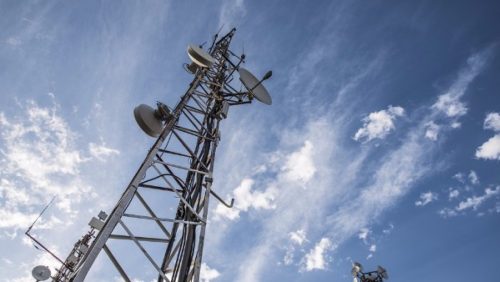Policies to Help Connect South Carolina Post COVID-19
In a matter of days, broadband connectivity went from being a luxury to a virtual necessity. Millions of adults suddenly found themselves working from home and students moved to learning online practically overnight. For many individuals, the only way to see their doctor is through telemedicine. While some communities across America have the internet infrastructure to meet these new demands, many do not.
Through the legislative process and the Federal Communications Commission (FCC), the federal government has been working to close the digital divide. But solving the issue requires federal, state, and local governments all pulling in the same direction. As state lawmakers return to session after the worst of the COVID-19 crisis has passed, they will have a great opportunity to pass laws to connect their citizens.
While it’s a positive development that ending the digital divide has grown on lawmaker’s priority list, not all solutions to the problem are created equal. Many good faith efforts have had little impact, and some have even slowed down the pace of progress. That is why state policy groups around the country have come together around the following policies to consider or reject as we work to close the digital divide for our citizens.
Some of these conversations are already underway in South Carolina. Others need to begin. Whether for distance education, telemedicine, or employment needs, increasing broadband access is vital to South Carolina’s future.
Policies to Consider
- Reduce costs and application times for 5G deployment: The FCC has already capped both application times and installation costs for deploying small cell technology via rulemaking. But the FCC rulemaking is a floor, not a ceiling. State lawmakers can further lessen application times and drive costs for deployment below the FCC mandate. This can ensure that the $9 billion the FCC is planning to spend on rural 5G will go further, while also encouraging more private investment in 5G for underserved areas.
- Be technologically neutral: Too often, proposals for connecting families center on bringing fiber connections to the home. While expanding fiber is important, there are new ways to deliver the needed broadband speeds. Examples include fixed wireless, low orbit satellites, and TV White Space. Legislators should ensure equal treatment is given to these technologies in any legislative package.
- Work with the federal government on broadband mapping: With the passage of Broadband DATA Act, the federal government is reworking how the FCC collects broadband connectivity data. Many states are already collecting this data and should create data sharing policies with the FCC. Furthermore, states’ local knowledge may prove invaluable to getting the accurate maps needed to close the digital divide.
- Make state infrastructure available to speed up deployment: State-controlled roads, towers, bridges, and other infrastructure often run to rural residents who lack broadband options. But many states have not made any or enough of this infrastructure available for deployment. With private companies unable to access this infrastructure, deployment costs and time dramatically increase, as private infrastructure must be constructed instead.
- Reduce or eliminate state right of ways fees: For states that do have processes for utilizing state-owned infrastructure, the rights of way to access said infrastructure can often be extremely costly in terms of both red tape and fees. States should cap fees to direct costs incurred and shorten the application time as much as possible.
- Utilize electric co-ops: Electric co-ops are non-profit, member-owned companies whose mission it is to bring electricity to their, often rural, members. As such, they often have infrastructure perfect for reaching rural consumers. These can be utilized by both ISP’s looking for a cost-effective way to deploy their equipment and by co-ops themselves. Co-ops have also proven effective at utilizing FCC grant dollars to provide connectivity to rural customers who wouldn’t otherwise be served by the private sector. It’s important that these co-ops have strong guardrails to prevent cross subsidization from their foremost duty of providing electricity and also that favoritism isn’t shown over the private sector.
- Pass “dig once” and “one-touch make ready” policies: Much of the cost in laying new fiber comes from digging up roads. States and localities can not only pass dig once policies, allowing ISP’s to lay fiber where road reconstruction is occurring; they can also provide this construction data preemptively to ISPs. Overlaying road construction plans with broadband maps can go a long way toward laying fiber cheaply and efficiently to connect new customers. Similarly, small cells or fixed wireless installations will be key to delivering internet access. Lowering the costs for installation on poles and opening them up to more competition via one-touch make ready policies can increase internet access.
- Streamline existing grant programs: With state budgets strained, discretionary funds are at a premium. If states have grant programs, they should consolidate these programs to the extent possible, streamline the qualifying criteria, and use best practices as demonstrated by the FCC’s reverse auction. They should further consider repurposing the funding to boost the bids of companies participating in the FCC’s 5G and rural broadband programs.
Policies to Avoid
- Don’t create government-owned networks: Oftentimes, there is a desire for the government to solve the digital divide directly. In this case, creating government-owned networks is a program often tried locally. These networks often go over budget, drain taxpayer resources, and deliver lower speeds than promised. At a time of rapidly evolving communications technology, the government cannot move quickly enough to keep up and deliver quality and efficient service.
- Don’t create new grant programs: Another impulse to close the digital divide is to simply throw more money at the problem. Many states have implemented grant programs, costing taxpayers tens of millions of dollars. If states have grant programs, they should be streamlined as pointed out above. If they aren’t streamlined, they should resist the urge to spend more money when state budgets are strained.
- Don’t enact state net neutrality: If any event disproved the notion that net neutrality was going to destroy the internet, it’s been COVID-19. The American internet infrastructure has held up to increased traffic, while European regulators have been forced to ask Netflix and YouTube to throttle their content. Furthermore, being able to prioritize content like telemedicine or distance learning is an important tool for networks right now, and it’s certainly not something that needs to be regulated away.
- Don’t look to generate revenue from broadband deployment: One of the largest causes of higher costs for deployment is local and state governments looking to cable providers as a revenue source. All funds charged to these companies mean fewer resources are available in less connected areas. Furthermore, these high costs may even keep the companies out of communities completely. Trying to balance budgets on cable companies’ backs will be a mistake that could backfire terribly, particularly if America is dealt another quarantine situation.





